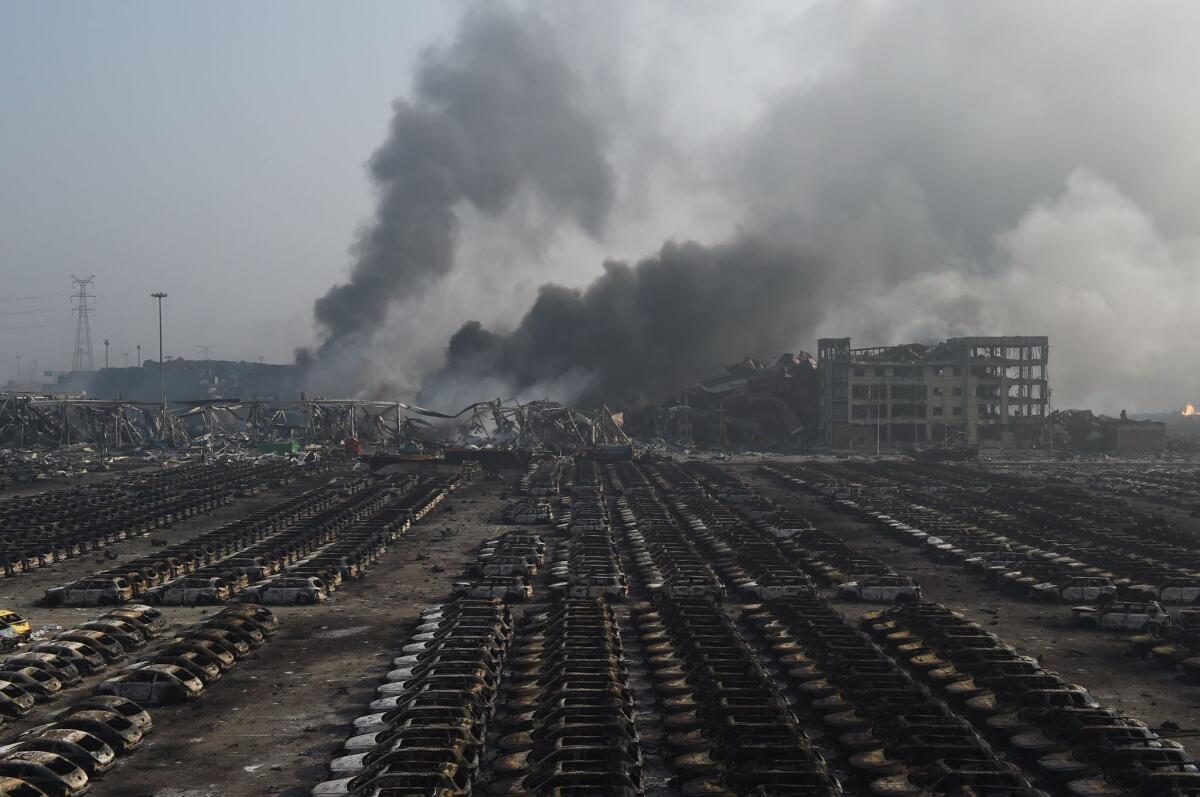China probe identifies stored chemical behind Tianjin blasts

Smoke billows behind rows of burnt-out cars at the site of a series of explosions in Tianjin, northern China, in August.
- Share via
reporting from BEIJING — The deadly warehouse blasts that killed 165 people in a Chinese port city in August were triggered when the stored chemical nitrocellulose became too dry and caught fire, investigators announced Friday.
An investigative team assembled by the State Council, China’s Cabinet, said flames spread among stocks of nitrocellulose, a flammable compound used as a binding agent with medical applications and as an ingredient in lacquer. The flames then spread to stores of the combustible fertilizer ammonium nitrate, touching off massive explosions.
The 165 people killed in the Aug. 12 blasts in Tianjin included 99 firefighters and 11 police officers.
Investigators previously have ruled that regulators failed to enforce safety rules, including keeping hazardous materials at the Ruihai International Logistics warehouses a proper distance away from residences. Authorities arrested several dozen people, including both warehouse executives and local government officials.
The investigative team said stocks of nitrocellulose at the Ruihai warehouses became too dry because of the loss of humidifying agents, and began to heat up because of hot weather. The material then began to burn, the team said.
ALSO:
Time expires on claims for winning $63-million Lotto jackpot
How are Muslims around the world reacting to Obama’s visit to a mosque?
How a Lincoln High teacher gets all his students to pass the AP Calculus exam
More to Read
Sign up for Essential California
The most important California stories and recommendations in your inbox every morning.
You may occasionally receive promotional content from the Los Angeles Times.









